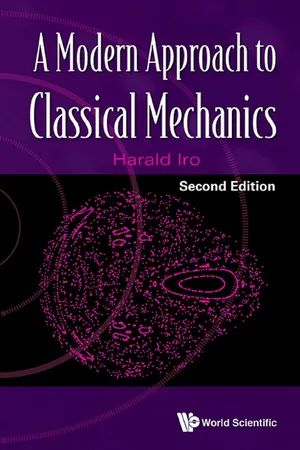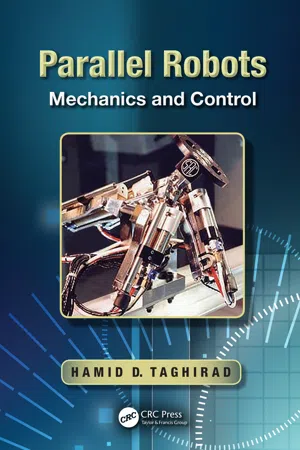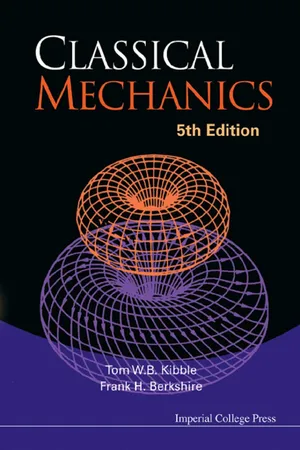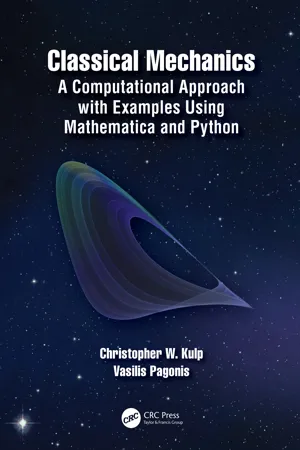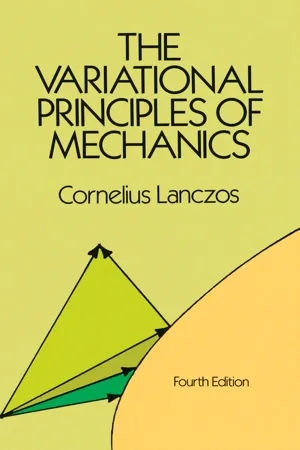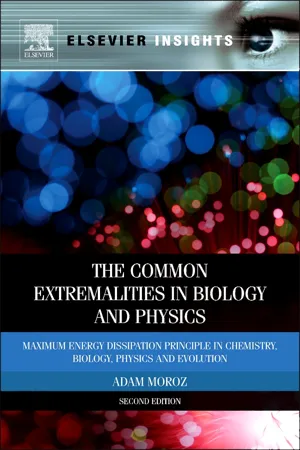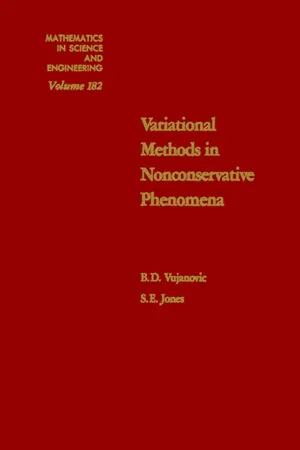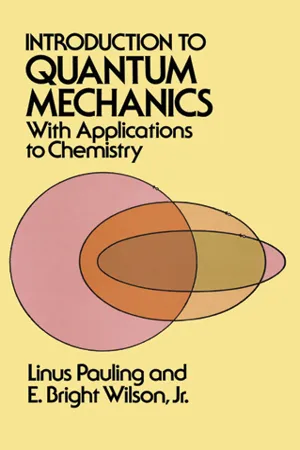Physics
Lagrangian Constraints
Lagrangian constraints in physics refer to restrictions placed on the motion of a system, typically due to external forces or conditions. These constraints are incorporated into the Lagrangian formalism, which is a mathematical framework used to describe the dynamics of physical systems. By accounting for these constraints, the Lagrangian approach allows for a more comprehensive and accurate analysis of the system's behavior.
Written by Perlego with AI-assistance
Related key terms
Related key terms
1 of 4
Related key terms
1 of 3
8 Key excerpts on "Lagrangian Constraints"
- eBook - ePub
- Harald Iro(Author)
- 2015(Publication Date)
- WSPC(Publisher)
9Lagrangian mechanics
At the end of the 18th century, an important stage in the development of classical mechanics was achieved. In 1788 Lagrange presented mechanics in a uniform, clear and very elegant manner in his “Mécanique analytique”. Lagrange’s book is the first comprehensive representation of analytical mechanics. It is an edifice of ideas: the building blocks are logical related to each other. The representation of physical processes by mathematical theories and models is unified and elegant. This “Analytical Mechanics” is a ‘phenomenal achievement in the economy of thought1 ’ (E. Mach, “The Science of Mechanics”).The treatment in this chapter differs from the historical development: Lagrange’s work is based on D’Alembert’s principle2 and on the concept of virtual displacements; we consider neither in this book. Instead, after a brief account of the calculus of variations, Lagrangian mechanics is introduced by identifying Newton’s equation of motion with the Euler-Lagrange equations for the Lagrangian.9.1 Constrained motion
In many problems in classical mechanics, we are given not only the forces, but also certain constraints that the orbits must obey. For example, in the case of the pendulum, the mass must remain a constant distance away from the pivot point. One distinguishes various kinds of constraints. A constraint depending only on the position r(t) of the particle and on time t, i.e. of the formis called a holonomic constraint. (In the case of the pendulum, the holonomic constraint is r2 (t) − l2 = 0.) Constraints that cannot be written in this form, for example, those that- Contain velocities or differentials only of the radius vectors (e.g.: or,- Appear only as inequalities,are non-holonomic. Examples of systems with non-holonomic constraints include:- The motion of a particle restricted to the interior of a sphere, |r(t)| ≤ R;- A wheel (radius R) rolling on a surface. Here the constraint v = relates the angular velocity of the wheel to its linear velocity v - eBook - ePub
Parallel Robots
Mechanics and Control
- Hamid D. Taghirad(Author)
- 2013(Publication Date)
- CRC Press(Publisher)
5.244 , respectively. The resulting formulation can be further simplified, however, term-by-term derivation and comparison of the simplified formulation to that derived by the Newton–Euler approach is a prohibitive task. To verify the obtained formulations, one may perform inverse and forward dynamic simulations detailed in Section 5.3.3 and obtain identical results.5.5 Lagrange Formulation
The Lagrangian mechanics is a reformulation of classical mechanics that combines conservation of momentum with conservation of energy. This formulation is extremely effective in the dynamic analysis of multibody systems, in which many reaction forces and moments exist between the bodies. The Lagrangian method formulates the equations of motion by using a set of generalized coordinates , and it eliminates all or some of the unwanted reaction forces and moments at the outset. The use of generalized coordinates may considerably simplify the dynamic analysis of a system. For example, consider a small frictionless bead traveling in a groove. If one is tracking the bead as a particle, calculation of the motion of the bead using the Newtonian mechanics would require solving for the time-varying constraint force required to keep the bead in the groove. Using the Lagrangian mechanics for the same problem, look at the path of the groove and choose a set of independent generalized coordinates that completely characterize the possible motion of the bead. This choice eliminates the need for the constraint forces to enter the resultant system of equations. There are fewer equations since one is not directly calculating the influence of the groove on the bead at a given moment.In the Lagrangian mechanics, the trajectory of a multi-body system is derived by solving the Lagrange equations in one of two forms, either the Lagrange equations of the first kind [69], which treat constraints explicitly as extra equations, often using Lagrange multipliers [42]; or the Lagrange equations of the second kind, which incorporate the constraints directly by judicious choice of generalized coordinates [149]. In what follows, a general description of both kinds is given. - eBook - ePub
- Tom W B Kibble, Frank H Berkshire(Authors)
- 2004(Publication Date)
- ICP(Publisher)
Chapter 10
Lagrangian Mechanics
We have already seen that the equations of motion for a system of N particles moving under conservative forces may be obtained from the Lagrangian function in terms of any set of 3N independent co-ordinates. (See §8.5 .) In this chapter, we shall give a more systematic account of the Lagrangian method, and apply it in particular to the case of rigid bodies.10.1Generalized Co-ordinates; Holonomic Systems
Let us consider a rigid body, composed of a large number N of particles. The positions of all the particles may be specified by 3N co-ordinates. However, these 3N co-ordinates cannot all vary independently, but are subject to constraints — the rigidity conditions. In fact, the position of every particle may be fixed by specifying the values of just six quantities — for instance, the three co-ordinates X, Y, Z of the centre of mass and the three Euler angles φ, θ, ψ which determine the orientation. These six constitute a set of generalized co-ordinates for the rigid body.In particular problems, these co-ordinates may be subject to further constraints, which may be of two kinds. First, we might for example fix the position of one point of the body, say the centre of mass. Such constraints are represented by algebraic conditions on the co-ordinates (e.g., X = Y = Z = 0), which may be used to eliminate some of the co-ordinates. In this particular case, the three Euler angles alone suffice to fix the position of every particle.The second type of constraint is represented by conditions on the velocities rather than the co-ordinates. For example, we might constrain the centre of mass to move with uniform velocity, or to move round a circle with uniform angular velocity. Then, in place of algebraic equations, we have differential equations (e.g., = u). In simple cases, these equations can be solved to find some of the co-ordinates as explicit functions of time (e.g., X = X0 + ut). Then the position of every particle will be determined by the values of the remaining generalized co-ordinates and the time t - eBook - ePub
Classical Mechanics
A Computational Approach with Examples Using Mathematica and Python
- Christopher W. Kulp, Vasilis Pagonis(Authors)
- 2020(Publication Date)
- CRC Press(Publisher)
and inserting this Lagrangian into the Euler-Lagrange equation yields,}−− m∂ V∂ xx ¨=− λ∂ f∂ x−− m∂ V∂ yy ¨=− λ∂ f∂ y(8.6.12) We will focus on the equation involving x, which can be written in the form:mx ¨= −+ λ∂ V∂ x∂ f∂ x(8.6.13) The left-hand sidemis the x-component of the net force acting on the system. In this case there are two forces acting on the system: an external force, associated with the potential energy V(x, y), and the constraint force. The first term in the right-hand side of (8.6.13 ) is the x-component of the external force acting on the system, gravity for example. The remaining term λ∂f/∂x must therefore be the x-component of the constraint force. We can repeat a similar argument for the y-equation (8.6.12 ) to see that λ∂f/∂y is the y-component of the constraint force. In general we have,x ¨Constraint Force from Lagrange’s Undetermined MultiplierF=j ,cq iλ j∂f j∂q i(8.6.14) whereFis the qj ,cq ii-component of the constraint force associated with the constraint equation fj(qi;t) = constant. The following example illustrates the use of the Euler-Lagrange equation to derive a constraint force.Example 8.7: Particle on a sphereA particle of mass m starts on top of a smooth fixed sphere of radius R. At time t = 0, the particle is perturbed by a very small force. The particle slides along the sphere’s surface before it eventually falls off. Find the angle the particle makes as it falls off of the sphere’s surface.Solution:The figure below illustrates the system when the particle has an angular displacement θ from its starting position.To begin the problem, we start by selecting polar coordinates to solve the problem. Because the particle is moving on the surface of the sphere, our constraint equation is,f ( r ; t ) = r − R = 0(8.6.15) The force of constraint is the force that keeps the particle on the sphere and. When the particle leaves the sphere’s surface,r ˙= 0r ˙≠ 0 - eBook - ePub
- Cornelius Lanczos(Author)
- 2012(Publication Date)
- Dover Publications(Publisher)
section 12 ). If these constraints are holonomic and appear in the form of algebraic relations between the variables:we can proceed in two different ways. We may eliminate m coordinates qi , with the help of the auxiliary conditions, thus reducing our system to a free system without kinematical constraints. Or we may dispense with eliminations and utilize the Lagrangian λ-method. In this method the integrand L of the given variational problem is modified to by adding the left- hand sides of the equations (58.1 ), after multiplying each equation by some undetermined factor λi(t).6 Then the problem is again handled as a free problem, discarding the given auxiliary conditions.Since the λiare undetermined factors, we can use –λi, as factors equally well and write in the formMoreover, in ordinary problems of classical mechanics L appears in the form T — V. We can combine the modification of L with the potential energy V by saying that V has been changed to defined as follows:This elegant mathematical method has a striking and impressive physical counterpart. The fact that we make the variation problem free after modifying the Lagrangian function L means that we drop the given kinematical conditions and consider the mechanical system as without constraints. But then the modification of V to means that we add to the potential energy of the impressed forces the potential energy of the forces which maintain the given kinematical constraints. These forces are given by:We see that the same conditions that we encountered before in statics (cf.chap. III, section 5 ) prevail in an exactly similar manner in dynamics. Once more the Lagrangian λ-method provides the forces of reaction which maintain kinematical constraints.However, the following point requires special attention. Let us assume that the given kinematical conditions (58.1 ) and the potential energy V are independent of the time t. Then the system is conservative, as we can see at once if we use the elimination method of surplus variables in treating auxiliary conditions. But then the forces which maintain the given constraints must likewise be conservative, which means that their potential energy cannot depend on t. On the other hand, the λi , are functions of t, - eBook - ePub
The Common Extremalities in Biology and Physics
Maximum Energy Dissipation Principle in Chemistry, Biology, Physics and Evolution
- Adam Moroz(Author)
- 2011(Publication Date)
- Elsevier(Publisher)
Similar to mechanics, the relationships between the degrees of freedom described by the functions of field (wave function) can be obtained by the variational method on the basis of the ideology of the least action principle. Therefore, it is reasonable to remember the main points of its formulation for the purpose of finding out the penalty forming the sense of the Lagrange approach for the most frequently considered physical fields. It would in turn allow the analysis of the energetical penalty formation to be carried out, having connected it eventually with penalty formulation (i.e., the MED principle) in biology.So in the case of mechanics, the Lagrange function depends directly on coordinates, their derivatives, and time:(5.65)As we know, in the field theory, the free fields are described on the basis of the least action principle [4] :Frequently, for a more expedient expression, the following designations can be used for the derivatives on space-time coordinates:(5.66)where S is the integral of action accepting the least possible value, L is the Lagrangian, i.e., the density of the Lagrange function for the fields, xiis independent space-time variables, uiis the set of functions of field (the components of wave functions), and ∂ui/ ∂xvis the derivatives on space-time coordinates.(5.67)and then the variation for the field may be written as:(5.68)and the Euler–Lagrange equations will be(5.69)By solving them relative to the functions of fields, one can obtain the expressions for the measured physical quantities. Let us consider some standard examples for the theory of field.5.3.1. Scalar Field
- eBook - ePub
- B. D. Vujanovic, S. E. Jones(Authors)
- 1989(Publication Date)
- Academic Press(Publisher)
(1.6.17) , can be interpreted as the differential equations of motion of representative particles in the configuration space.1.7 A Brief Analysis of the Lagrangian Equations
In this section, we briefly discuss several general points concerning the Lagrangian equations of motion (1.6.17) of a rheonomic, holonomic dynamical system.1.7.1 Potential Forces
Let us consider an important special case in which the impressed forces F i = X i i + Y i j + Z i k (i = 1, …, N ) are dependent on position and time but independent of the velocities of the particles, and where they are also derivable from a potential function of the form(1.7.1)such that the components of the impressed forces can be expressed(1.7.2)Since time is not varied, the total virtual work done by the impressed forces is(1.7.3)In the case of scleronomic dynamical systems, the potential function(1.7.4)does not depend on time; we call such a function the potential energy of the dynamical system. The impressed forces obtained by means of (1.7.4) are usually called conservative forces , in contrast to nonconservative forces, which are not derivable from a potential function. However, if a dynamical system is rheonomic, in spite of the fact that the forces are derivable from a time-dependent potential, (1.7.1) , they are not conservative, although they have potential character.If all the impressed forces acting on a dynamical system are potential in nature, it is easy to find a rule for calculating the generalized forces. Thus if we substitute (1.7.2) into (1.6.11) - Linus Pauling, E. Bright Wilson, E. Bright Wilson(Authors)
- 2012(Publication Date)
- Dover Publications(Publisher)
Although it is the modern theory of quantum mechanics in which we are primarily interested because of its applications to chemical problems, it is desirable for us first to discuss briefly the background of classical mechanics from which it was developed. By so doing we not only follow to a certain extent the historical development, but we also introduce in a more familiar form many concepts which are retained in the later theory. We shall also treat certain problems in the first few chapters by the methods of the older theories in preparation for their later treatment by quantum mechanics. It is for this reason that the student is advised to consider the exercises of the first few chapters carefully and to retain for later reference the results which are secured.In the first chapter no attempt will be made to give any parts of classical dynamics but those which are useful in the treatment of atomic and molecular problems. With this restriction, we have felt justified in omitting discussion of the dynamics of rigid bodies, non-conservative systems, non-holonomic systems, systems involving impact, etc. Moreover, no use is made of Hamilton's principle or of the Hamilton-Jacobi partial differential equation. By thus limiting the subjects to be discussed, it is possible to give in a short chapter a thorough treatment of Newtonian systems of point particles.1. NEWTON'S EQUATIONS OF MOTION IN THE LAGRANGIAN FORMThe earliest formulation of dynamical laws of wide application is that of Sir Isaac Newton. If we adopt the notationxi , yi , zifor the three Cartesian coordinates of the i ′th particle with massmi, Newton's equations for n point particles arewhereXi , Yi , Ziare the three components of the force acting on the i th particle. There is a set of such equations for each particle. Dots refer to differentiation with respect to time, so thatBy introducing certain familiar definitions we change Equation 1–1 into a form which will be more useful later. We define as the kinetic energy T
Index pages curate the most relevant extracts from our library of academic textbooks. They’ve been created using an in-house natural language model (NLM), each adding context and meaning to key research topics.
Explore more topic indexes
Explore more topic indexes
1 of 6
Explore more topic indexes
1 of 4
